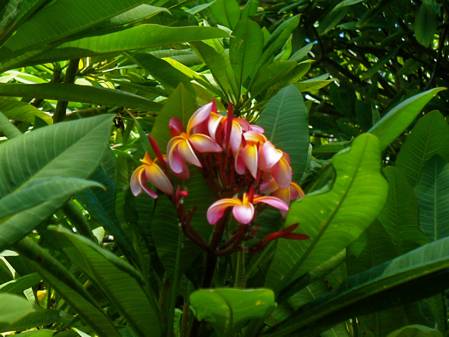Leaf Plumbing Design for Advanced Life
Efficient plumbing is easy to take for granted until it suddenly ceases to be efficient. This point came home to me rather dramatically a few years ago when I received an enormous bill from our water utility company. After shutting off all the water valves in and around our house I noticed that the water meter dial out by our sidewalk was still spinning rapidly. It turned out we had a major leak in the pipe that ran under our front yard from the main trunk under our street to our house. It took four days without any water and over $4,000 for a crew of three plumbers to restore our plumbing to its original high-efficiency level.
In an article published in Ecology Letters, biologists Tim Brodribb and Taylor Feild explain how changes in leaf hydraulic design launched, with high efficiency, the angiosperm revolution, which in turn sustained a revolution in large warm-blooded animals.1 Brodribb and Feild begin by pointing out that, compared to other plants, angiosperms (flowering plants) manifest dramatically greater vegetative productivity. Brodribb and Feild continue by describing how biologists have known for several decades that this greater productivity results from angiosperms’ high photosynthetic capacity. What these researchers offer in their paper is an explanation for this remarkable photosynthetic capacity.
Brodribb and Feild demonstrate that angiosperms’ higher photosynthetic activity is almost entirely attributable to far greater leaf vein density and leaf vein capacity (see figure 1). They examined 504 different angiosperm species and then reconstructed, as best as they could from an evolutionary perspective, the history of changes in leaf vein density and capacity. Their analysis suggests that early angiosperms (140–100 million years ago) produced leaves with high photosynthetic rates compared to non-angiosperms—but low compared to present-day angiosperms. This same analysis also suggests that as angiosperms began to proliferate and become predominant throughout the continental landmasses in the period beginning about 100 million years ago, there was a coincidental surge in photosynthetic capacity in their leaves.

Figure 1: Flowering Plants Manifest the Highest Leaf Vein Density
The extraordinarily high leaf vein density in angiosperms, as seen in this Plumeria shrub, explains their very high photosynthetic efficiency. This efficiency in turn effectively provides abundant food for animals and removes greenhouse gases from Earth’s atmosphere.
Image credit: Hugh Ross
Such development in angiosperm history makes perfect sense from a biblical creation perspective. Over the past 3.0–3.5 billion years, the Sun has been steadily brightening as ongoing nuclear burning increases the mass density of the Sun’s core and thereby drives an increasingly efficient nuclear burning rate. Today, the Sun is about 15 percent brighter than it was 3 billion years ago. The Creator has compensated for the Sun’s brightening by frequently replacing Earth’s existing life with life-forms more efficient at removing greenhouse—or heat-trapping—gases from the atmosphere.
Angiosperms are by far the most efficient of all plants in removing greenhouse gases from Earth’s atmosphere. First, their higher rates of photosynthesis mean that more carbon dioxide is removed from the atmosphere. Second, angiosperms’ erosion of silicates into carbonates and sand (a reaction that also removes carbon dioxide from the atmosphere) is two or three times for efficient than that of other plants.
Not until 140–100 million years ago were angiosperms necessary for compensating for the Sun’s increasing brightness. Not until 50–100 million years ago were angiosperms with higher photosynthetic capacity even necessary. The Creator created angiosperms at the just-right times, in just-right amounts, and with just-right levels of photosynthetic capacity to compensate perfectly for the Sun’s increasing luminosity. At the same time the proliferation of angiosperms and the increasing photosynthetic capacity of angiosperms pumped more oxygen into Earth’s atmosphere and provided a much greater supply of food, which in turn made possible the Creator’s introduction of large-bodied, warm-blooded birds and mammals. Angiosperms also played an important role in contributing to the biodeposits that made possible the launch and maintenance of global high-technology civilization. In many marvelous ways angiosperms testify to how carefully and generously God designed Earth’s plant life for animals and especially for the benefit of human beings.
Endnotes
- Tim J. Brodribb and Taylor S. Feild, “Leaf Hydraulic Evolution Led a Surge in Leaf Photosynthetic Capacity during Early Angiosperm Diversification,” Ecology Letters 13 (February 2010): 175–83.





